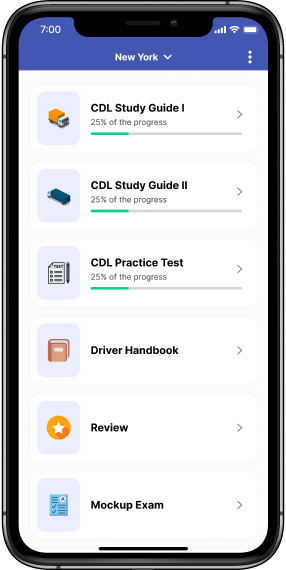The Impact of E-commerce on the Trucking Industry

E-Commerce, or electronic commerce, refers to buying and selling goods and services over the internet. E-Commerce has become increasingly popular in recent years due to its convenience and accessibility. With the rise of smartphones and other mobile devices, consumers can now shop from anywhere at any time, and E-Commerce platforms can offer a broader range of products and services than traditional brick-and-mortar stores.
The expansion of E-Commerce has impacted almost all industries, although some effects may not be immediately noticeable. While some products were expected, such as the decline of physical stores, other impacts, like those on the trucking industry, were not initially anticipated. As a result, initiatives such as trucking must remain flexible as they encounter new challenges and opportunities through E-Commerce. E-Commerce is transforming how people shop and spend and will likely continue to do so.E-Commerce Rapid Growth
Figure 01. E-commerce Growth Roadway
E-Commerce has experienced rapid growth over the past few decades. This growth can be attributed to various factors, including:
- Increasing Internet Penetration: As more people worldwide gain internet access, more potential customers can shop online.
- Growing Use of Mobile Devices: With the rise of smartphones and tablets, people can easily shop anywhere, anytime.
- Convenience: E-Commerce allows consumers to shop from home, avoiding physically visiting brick-and-mortar stores.
- Greater Selection and Availability: E-Commerce platforms can offer a broader range of products and services than traditional stores and can be available 24/7.
- Competitive Pricing: With the ability to compare prices easily across different websites, consumers can often find better deals online.
- Improved Logistics and Shipping: Advances in logistics and shipping technologies have made it easier and faster for products to be delivered to customers.
- Increased Trust and Security: E-Commerce platforms have become more secure and trustworthy over time, which has helped to build consumer confidence in online shopping.
The logistics and shipping industry has also evolved to accommodate the growth of E-Commerce. Advances in technology have made it easier and faster to deliver products to consumers, which has increased online sales. Additionally, as E-Commerce platforms have become more secure and trustworthy, consumers have become more confident in online shopping, which has further driven the growth of E-Commerce.
E-Commerce has seen tremendous growth and is expected to expand as more consumers embrace online shopping and technology advances.How has E-Commerce changed business?
E-Commerce has significantly impacted the business world, transforming how businesses operate and interact with customers. With the rise of online shopping, businesses can reach a global audience and operate 24/7, increasing their sales and revenue. Additionally, E-Commerce has enabled businesses to personalise the shopping experience for customers, collect valuable data, and reduce costs associated with physical stores.
However, with increased competition, businesses must offer competitive pricing, high-quality products, and excellent customer service to remain relevant in the market. E-Commerce has revolutionised the retail industry by providing customers with greater convenience, choice, and product access. However, it has also created significant logistical challenges for businesses, including:Figure 02. The Impacts of E-commerce on Businesses
1. Inventory Management:
E-Commerce requires a more complex inventory management system than traditional retail. This is because E-Commerce businesses must manage multiple sales channels, including online marketplaces and their own websites. The challenge is maintaining accurate inventory levels across all channels to prevent stockouts or overstocking.
2. Order Fulfillment:
E-Commerce orders are often small, individual packages that need to be picked, packed and shipped quickly. This requires efficient order fulfilment systems, such as automated warehouses, that can handle high order volumes and provide real-time order tracking information to customers.
3. Last-Mile Delivery:
The last mile of delivery is the most challenging and expensive part of the delivery process. E-Commerce trucking businesses need to ensure that their delivery partners have efficient routes, adequate resources, and reliable tracking systems to ensure timely and secure delivery to customers.
4. Hours of service regulations:
E-Commerce has increased the demand for last-mile deliveries, which can be more challenging to schedule and may require shorter delivery windows. This has pressured drivers to meet delivery deadlines while complying with HOS regulations.
5. Returns and Exchanges:
E-Commerce businesses must also manage returns and exchanges, which can be costly and time-consuming. Businesses must have an effective system for handling returns, including providing pre-paid return labels, processing refunds or exchanges, and managing inventory restocking.
6. Data Security:
E-Commerce businesses must ensure that their systems and processes are secure and comply with relevant data protection regulations. This includes securing payment data, customer information, and transaction records.
In summary, E-Commerce has presented new logistics and supply chain management challenges. To succeed in the E-Commerce space, businesses must have adequate systems and processes for inventory management, order fulfilment, last-mile delivery, returns and exchanges, and data security.Learn more about the CDL exams and valuable tips to pass the tests and obtain your commercial driver's license in our CDL articles.Get ready for the CDL exams with our CDL Prep app, providing a variety of exam-like Questions and state-specific practice tests.





